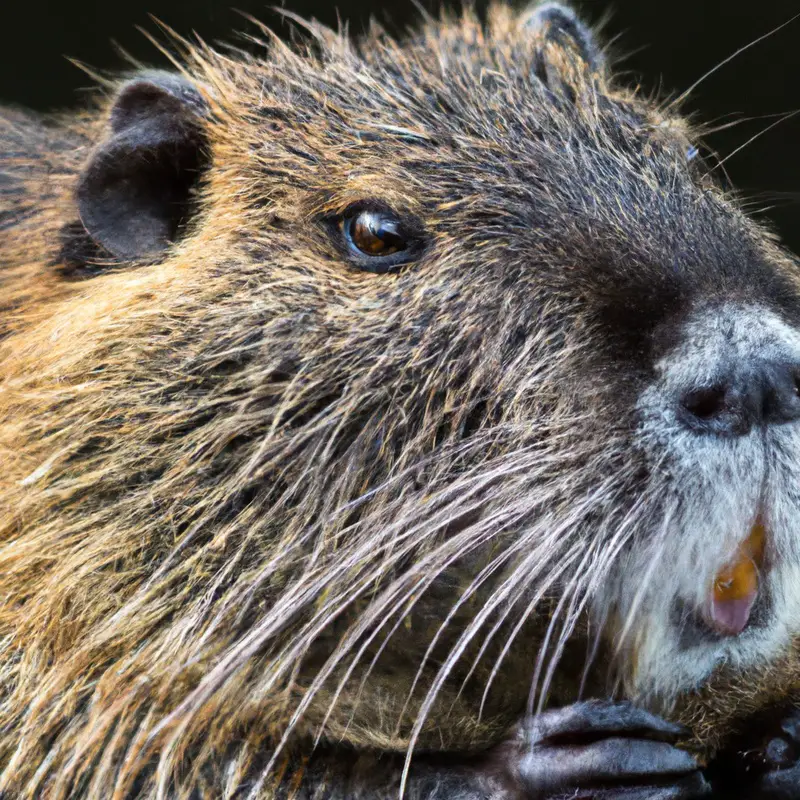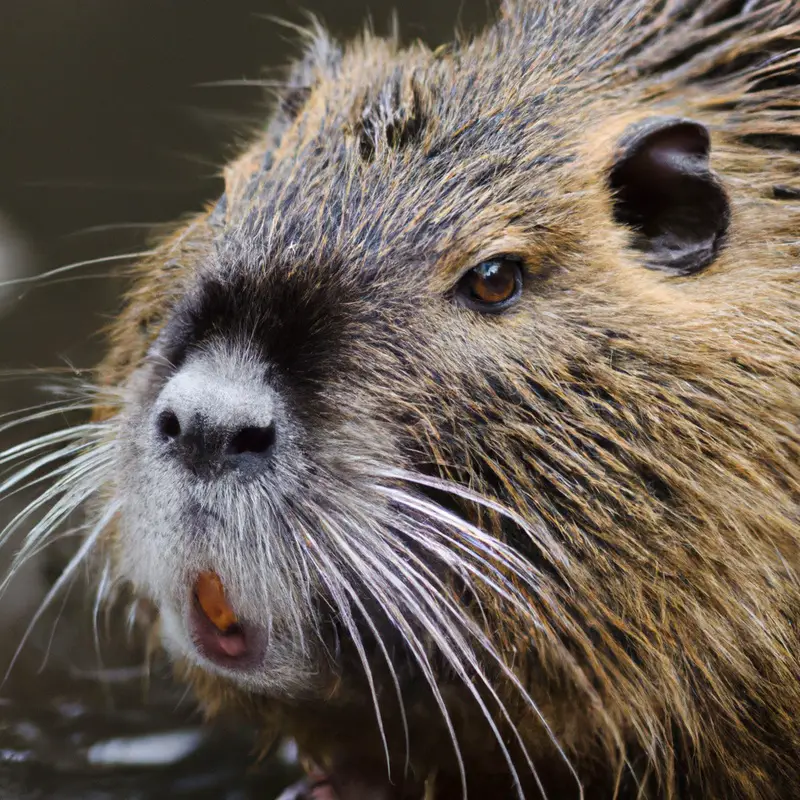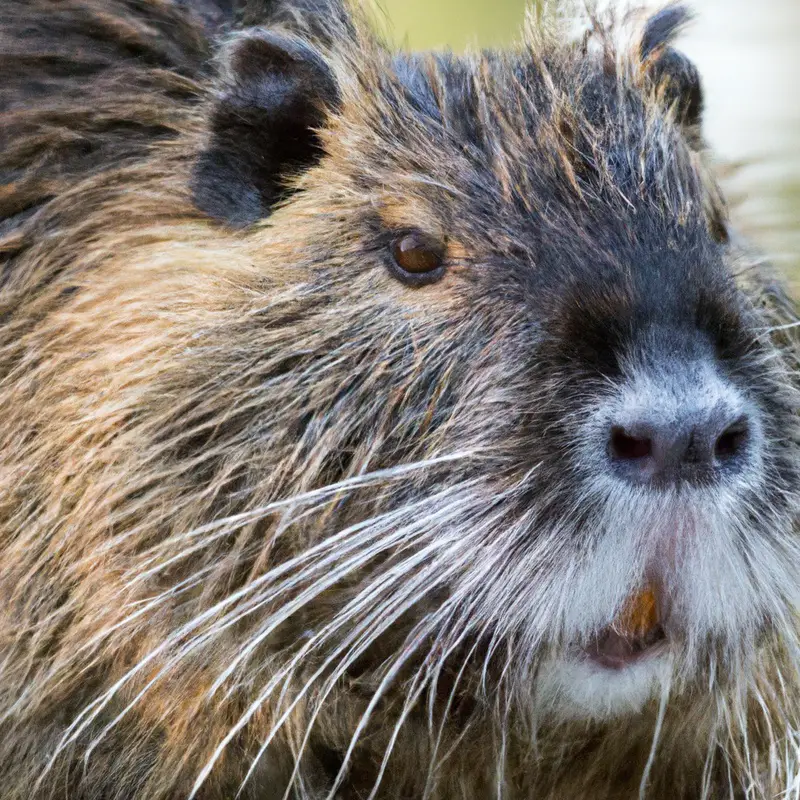Key Takeaways:
- Nutria hunting is an active practice in Arkansas in order to control and manage the population of this invasive species.
- The endangered marshlands in Arkansas face significant threats from nutria, and hunting is seen as an effective solution to protect these ecosystems.
- Nutria hunting regulations and seasons in Arkansas are designed to ensure sustainable hunting practices that balance conservation efforts and control the nutria population.
- Hunting nutria can not only help preserve the natural habitats, but also provide economic benefits through the sale of nutria pelts and meat.
Are you ready for a unique hunting experience in the heart of Arkansas?
If you’re looking for a thrilling challenge and want to contribute to ecosystem management, then nutria hunting is the perfect choice for you.
Nutria, also known as coypu, may not be on every hunter’s radar, but these invasive rodents are wreaking havoc on our wetlands.
In this article, I’ll guide you through the ins and outs of nutria hunting in Arkansas, from regulations and best hunting times to gear recommendations and ethical shooting techniques.
Get ready to make a difference while enjoying an exhilarating hunt in the beautiful Arkansas wilderness.
| Hunting Nutria in Arkansas |
What is Nutria?
Nutria Description
Nutria, also known as coypu, are large, semi-aquatic rodents native to South America. They have brown fur, webbed hind feet, and a long, cylindrical tail.
Nutria grow up to 2.5 feet long and can weigh between 15 to 20 pounds.
Known for their voracious appetite, they primarily feed on aquatic plants, crops, and tree bark. Nutria are capable swimmers and are often found near bodies of water such as marshes, lakes, and rivers.
Their population has boomed in certain areas, causing damage to wetland habitats.
Nutria Habits and Behavior
Nutria, also known as coypu, are semi-aquatic rodents native to South America.
They have established invasive populations in many parts of the world, including Arkansas.
Nutria are primarily herbivores, feeding on aquatic plants and grasses.
They have a high reproductive rate, with females capable of producing multiple litters per year.
Nutria are active mostly during the night and early morning, and they prefer areas with dense vegetation and water sources.
Their burrows can disrupt the stability of riverbanks and levees.
Hunting is one method used to control nutria populations and minimize their environmental impact in Arkansas.

Nutria Hunting in Arkansas
Hunting Regulations in Arkansas
Hunting regulations in Arkansas are designed to ensure the safety of both hunters and wildlife. You are required to have a valid hunting license, which can be obtained from the Arkansas Game and Fish Commission.
The regulations set limits on the number and species of animals you can harvest, as well as specific hunting seasons and methods.
It is important to familiarize yourself with these regulations before heading out into the field. Additionally, be sure to follow all safety guidelines and practice ethical hunting practices to preserve the natural balance and beauty of Arkansas’s wildlife.
Best Time and Season to Hunt Nutria in Arkansas
The best time and season to hunt nutria in Arkansas is during the fall and winter months.
This is when nutria are most active and their population is at its highest.
Additionally, hunting nutria during this time is beneficial for the ecosystem, as it helps control their population and minimize damage to wetland habitats.
It’s important to ensure you have the necessary hunting permits and follow all state regulations before embarking on a nutria hunting expedition.
Always prioritize safety and practice responsible hunting practices.

Hunting Methods for Nutria in Arkansas
When it comes to hunting nutria in Arkansas, there are a few effective methods you can consider.
One popular method is using firearms, such as shotguns, to hunt nutria.
Another method is trapping, where you can set up traps near their habitats.
Additionally, hunting with dogs can be a successful approach, as they can sniff out and chase down nutria.
Keep in mind that it’s important to follow Arkansas hunting regulations and obtain the necessary licenses before engaging in nutria hunting.
Stay safe and have a successful hunt!
Recommended Gear for Nutria Hunting in Arkansas
I recommend the following gear for nutria hunting in Arkansas:
- Firearm: A shotgun with a 12-gauge or 20-gauge is ideal for nutria hunting. Ensure you have a reliable firearm that is suitable for waterfowl hunting.
- Ammunition: Use non-toxic shotgun ammunition, such as steel or bismuth, as lead shot is prohibited for waterfowl hunting in Arkansas.
- Camouflage clothing: Blend into your surroundings with camouflage clothing to increase your chances of getting close to nutria. Opt for waterproof and breathable materials for comfort.
- Waders: Invest in a good pair of waterproof waders, as nutria hunting often involves navigating through wet and muddy environments. Neoprene or breathable waders are popular choices.
- Decoys: Nutria are social animals, and using decoys can attract them to your hunting area. Look for nutria-specific decoys or use floating duck decoys as substitutes.
- Calls: Nutria calls can be effective in attracting these rodents closer to your hunting location. Acquire a nutria call to imitate their vocalizations and increase your chances of success.
- Binoculars: A quality pair of binoculars will help you spot nutria from a distance. Look for ones with good magnification and lens coatings for sharp and clear views.
- Hunting knife: A sharp hunting knife is a must-have for field dressing nutria. Choose a sturdy knife with a good grip for efficient and safe processing.
Remember to check and comply with all Arkansas hunting regulations before heading out. Stay safe during your nutria hunting adventures!

Tips for Successful Nutria Hunting
Scouting and Locating Nutria Habitats
Scouting and locating nutria habitats is key to a successful hunt. One effective method is to look for signs of nutria activity, such as chewed vegetation and their distinctive burrows near water sources.
Since nutria are semi-aquatic, focus on wetlands, marshes, and riverbanks.
They prefer areas with abundant vegetation, so keep an eye out for dense vegetation patches. Using binoculars can help you spot them from a distance.
Additionally, consulting with local wildlife authorities or experienced hunters can provide valuable insights on the specific areas where nutria are commonly found.
Happy scouting!
Camouflage and Concealment Techniques
Camouflage and concealment are key techniques when hunting nutria. Effective camouflage will help you blend into your surroundings and remain undetected by the animals.
Choose a camouflage pattern that matches the environment you’ll be hunting in.
Remember to cover your exposed skin and wear gloves, a face mask, and a hat to break up your silhouette. Take advantage of natural cover, such as bushes and trees, to further conceal yourself.
Move slowly and quietly, using available cover to stay hidden.
Utilize blinds or natural features to create a concealed position for better ambush opportunities.
Shot Placement and Ethical Shooting
Shot placement and ethical shooting are crucial when hunting nutria. It is important to aim for a clean kill to ensure minimal suffering for the animal.
The ideal shot placement is in the vitals, which are the heart and lungs.
This requires careful aiming and understanding the anatomy of the nutria. Always prioritize a quick and humane kill.
Additionally, it is essential to follow all local hunting regulations and ethical guidelines to ensure responsible and sustainable hunting practices.
Retrieving and Handling Nutria
When it comes to retrieving and handling nutria, there are a few important things to keep in mind.
First, it’s crucial to always wear gloves when handling these animals, as they can carry diseases.
Secondly, it’s important to approach nutria with caution, as they can be aggressive if they feel threatened.
To retrieve a nutria, use a long-handled net or trap to safely catch it.
Lastly, if you need to transport or dispose of a nutria, make sure to follow any local regulations or guidelines.
And remember, always prioritize your safety when handling these animals.
Nutria as a Game Species
Nutria as an Invasive Species
Nutria, also known as coypu, are an invasive species in many parts of the world, including the United States. These large rodents were introduced for their fur, but have caused significant damage to ecosystems.
Nutria reproduce rapidly and consume large amounts of vegetation, destroying wetlands and impacting native species.
Additionally, their burrowing habits weaken levees and can lead to flooding. Efforts are underway to control and eradicate nutria populations to protect native biodiversity and prevent further damage.
Nutria’s Impact on Ecosystems
Nutria have a significant impact on ecosystems where they are introduced.
They are herbivores that eat vast amounts of vegetation, particularly marsh plants.
As a result, they can cause habitat destruction and, subsequently, alter the composition of plant and animal species in wetland ecosystems.
Nutria also disrupt soil stability due to their burrowing behavior, leading to erosion.
In addition, their feeding habits can impact water quality by releasing excess nutrients into the water.
Overall, nutria’s presence can have detrimental effects on the delicate balance of ecosystems, necessitating management strategies to mitigate their impact.
Nutria’s Use and Management in Arkansas
Nutria’s use and management in Arkansas primarily focuses on controlling their population and preventing damage to wetlands.
The state allows hunting and trapping of nutria as a means of population control.
This helps protect the native habitats and species that can be negatively impacted by nutria.
Furthermore, efforts are in place to educate the public about the ecological impacts of nutria and encourage reporting of sightings.
Nutria management is crucial to maintaining the delicate balance of Arkansas’s wetland ecosystems.
Frequently Asked Questions (FAQs)
Do I need a hunting license to hunt nutria in Arkansas?
You do need a hunting license to hunt nutria in Arkansas. It is a requirement set by the Arkansas Game and Fish Commission.
A hunting license not only allows you to legally hunt nutria but also ensures that you are hunting in a responsible and sustainable manner.
Make sure to obtain the necessary license before heading out to hunt nutria in Arkansas.
Can I hunt nutria year-round in Arkansas?
You can hunt nutria year-round in Arkansas. There are no specific seasons or restrictions for hunting nutria in the state.
However, it is important to check with the local wildlife authorities for any specific regulations or permits that may be required.
It’s always a good idea to familiarize yourself with the local hunting laws and regulations to ensure that you are hunting responsibly and legally. Happy hunting!
Is there a bag limit for nutria hunting in Arkansas?
In Arkansas, there is currently no bag limit for nutria hunting. This means that you can harvest as many nutria as you can legally obtain a permit for.
However, it is important to follow all other hunting regulations and guidelines set by the Arkansas Game and Fish Commission.
These may include restrictions on hunting seasons, required permits, and specific firearms or methods allowed for hunting nutria. Always check the latest regulations to ensure you are in compliance.
Happy hunting!
What is the best firearm for nutria hunting in Arkansas?
The best firearm for nutria hunting in Arkansas is a shotgun chambered in 12 or 20 gauge. This is because nutria are typically hunted at close range, making shotguns effective in delivering a spread of pellets to ensure a clean and humane kill.
Additionally, shotguns provide versatility as they can shoot a variety of ammunition types, such as buckshot or slugs, depending on the hunting situation.
It is important to follow all local regulations and use appropriate ammunition to ensure safety and effectiveness in nutria hunting.
Are there any restrictions on selling or consuming nutria meat in Arkansas?
There are no restrictions on selling or consuming nutria meat in Arkansas. You are free to sell and eat nutria meat without any legal limitations.
However, it’s important to note that nutria meat may not be very common in the state, so availability might vary.
It’s always a good idea to check with local regulations or specialty markets for the availability of nutria meat in your area. Enjoy your nutria meat dishes!
Can I use a hunting dog for nutria hunting in Arkansas?
Yes, you can use a hunting dog for nutria hunting in Arkansas. Hunting with dogs is a common practice for targeting nutria, as dogs have a keen sense of smell and can track down these elusive creatures in the marshy areas where they reside.
Dogs can help flush out the nutria and retrieve them for you.
Just make sure to follow the regulations and guidelines set by the Arkansas Game and Fish Commission for hunting with dogs, such as obtaining the necessary permits and keeping control of your dog at all times.
What are the potential risks or dangers of nutria hunting in Arkansas?
Nutria hunting in Arkansas can pose certain risks and dangers that you should be aware of.
Firstly, nutria are known for their aggressive behavior and can become defensive if they feel threatened, leading to potential bites or scratches.
Secondly, navigating the marshy and swampy terrain where nutria are typically found can be challenging and can increase the risk of slips, falls, or getting stuck in the mud.
Lastly, it’s important to be cautious with firearms as accidental injuries can occur if firearms are mishandled or used improperly.
Always prioritize safety and follow local hunting regulations while hunting nutria in Arkansas.
Final Verdict
Hunting nutria in Arkansas can be an exciting and rewarding experience for outdoors enthusiasts.
Nutria, also known as coypu, are an invasive species that can cause significant damage to ecosystems, making their management crucial.
By understanding their habits and behavior, following hunting regulations, and employing effective hunting methods, hunters can contribute to the control of the nutria population while enjoying a challenging pursuit.
Remember to scout for nutria habitats, use camouflage techniques, practice ethical shooting, and handle nutria responsibly.
With the right gear and knowledge, you can have a successful nutria hunting trip in Arkansas.
Happy hunting!








